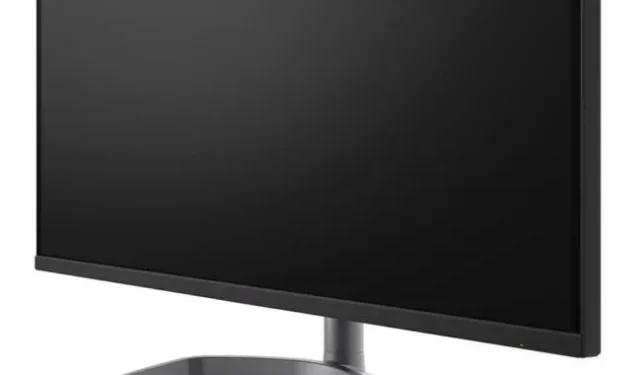OLED is so popular with buyers looking for a high-quality image that its acronym is expanding. But in PC monitors, OLED means limited sizes and high prices. Mini LED is a good alternative, but has long been a high price tag, partly because the devices are so often sold to creative professionals. But with the introduction of the mini LED PC monitor this week, the technology is cheaper than ever.
Mini LED monitors can include more LEDs in their backlight because each individual LED in a mini LED monitor is about half the size of the diodes in conventional LED monitors. In a full screen local dimming (FALD) monitor that has independently controllable lighting zones, this should result in greater contrast as the display has more control over brightness in different areas of the image. The contrast, however, won’t be as extreme as you’d expect from an OLED.
The Cooler Master GP27-FQS will be released sometime between the end of Q2 and the beginning of Q3 for a suggested retail price of $699. However, a spokesperson for Cooler Master told Ars Technica that it is “likely”the sale price will be “closer to $550”.
Even with the expected MSRP, the GP27-FQS should be the cheapest mini LED monitor out there. The current holder of this title is the $2,000 Asus ProArt PA27UCX-K. This is a 27″IPS monitor with 576 zones of local dimming, a 60Hz refresh rate, and a resolution of 3840 x 2160. Today’s mini LED options go all the way up to Apple’s acclaimed Pro Display XDR, a 32″6K screen with a starting MSRP of $ 5,000.
You can expect to move away from the creative professional side of technology, which tends to be expensive, and get more affordable monitors. But today’s non-professional mini LED options are still expensive due to their extreme refresh rates. The Asus ROG Swift PG32UQX sells for a suggested retail price of $3,000 but is available for $2,900 at the time of writing. There’s also the massive 49-inch Samsung Odyssey Neo G9 G95NA, which can be found for $2,200.
The GP27-FQS should also have a price advantage over upcoming mini LED monitors, including a bunch of non-pro products announced at CES last month. For example, Acer plans to release the Predator X32 FP mini LED monitor in the second quarter for $1,800.
Why so cheap?
One obvious reason for the lower price of the GP27-FQS is that it has a resolution of 2560 x 1440 rather than 4K and a frequency of 165Hz. AOC’s upcoming 170Hz AG274QXM also has 1440p resolution but has been advertised for about $450 more than the GP27-FQS.
The GP27-FQS also doesn’t use Nvidia G-Sync, which is often expensive. (GP27-FQS uses AMD FreeSync Premium and you can usually run G-Sync monitors unofficially on such monitors with varying results).
The inexpensive Cooler Master mini LED monitor also features 576 local dimming zones. There are FALD monitors and TVs with fewer zones, but you can also find mini LED monitors with over 1000 zones. For example, the aforementioned Neo Odyssey Neo G9 has 2048 of them.
More local dimming results in more dynamic range and control over how different parts of the image look. This means you can have an image that is very bright in some areas, but has deep blacks elsewhere. In OLED, each pixel represents a separate zone, so if you are considering a mini LED as an alternative to OLED, a large number of zones is especially important.
At the time of writing, the upcoming Cooler Master Mini LED Monitor does not have the VESA certifications for HDR delivery that many competitors have.
Cooler Master has also announced a 4K 160Hz version of this monitor, the GP27-FUS. This device is also cheaper than other mini LED monitors. With similar specs to the GP27-FQS, minus the switch to HDMI 2.1, the monitor will cost $1,100 when it debuts alongside its lower-res sibling.
Brighter than OLED
The advantage of mini LEDs over OLEDs is that they are usually brighter. The GP27-FQS claims to hit 1200 nits, which is what happens with HDR content. With SDR content, you can expect a maximum brightness of 600 nits.
In terms of color, the monitor claims 97 percent DCI-P3 coverage with quantum dots. This doesn’t quite line up with what QD-OLED, supposedly a more colorful type of OLED that also uses quantum dots, claims. (The Alienware AW3423DW, meanwhile, claims 99.3 percent.) But the GP27-FQS still has a wide color gamut.
In addition to image quality, the price of the monitor is affected by its set of functions. The GP27-FQS has a pair of 2W speakers, a USB Type-C connector (90W power delivery), as well as two HDMI 2.0 ports (instead of the latest HDMI 2.1), DisplayPort 1.4, two USB-A ports, and a USB port. B. There is also a backlight on the back of the panel.


